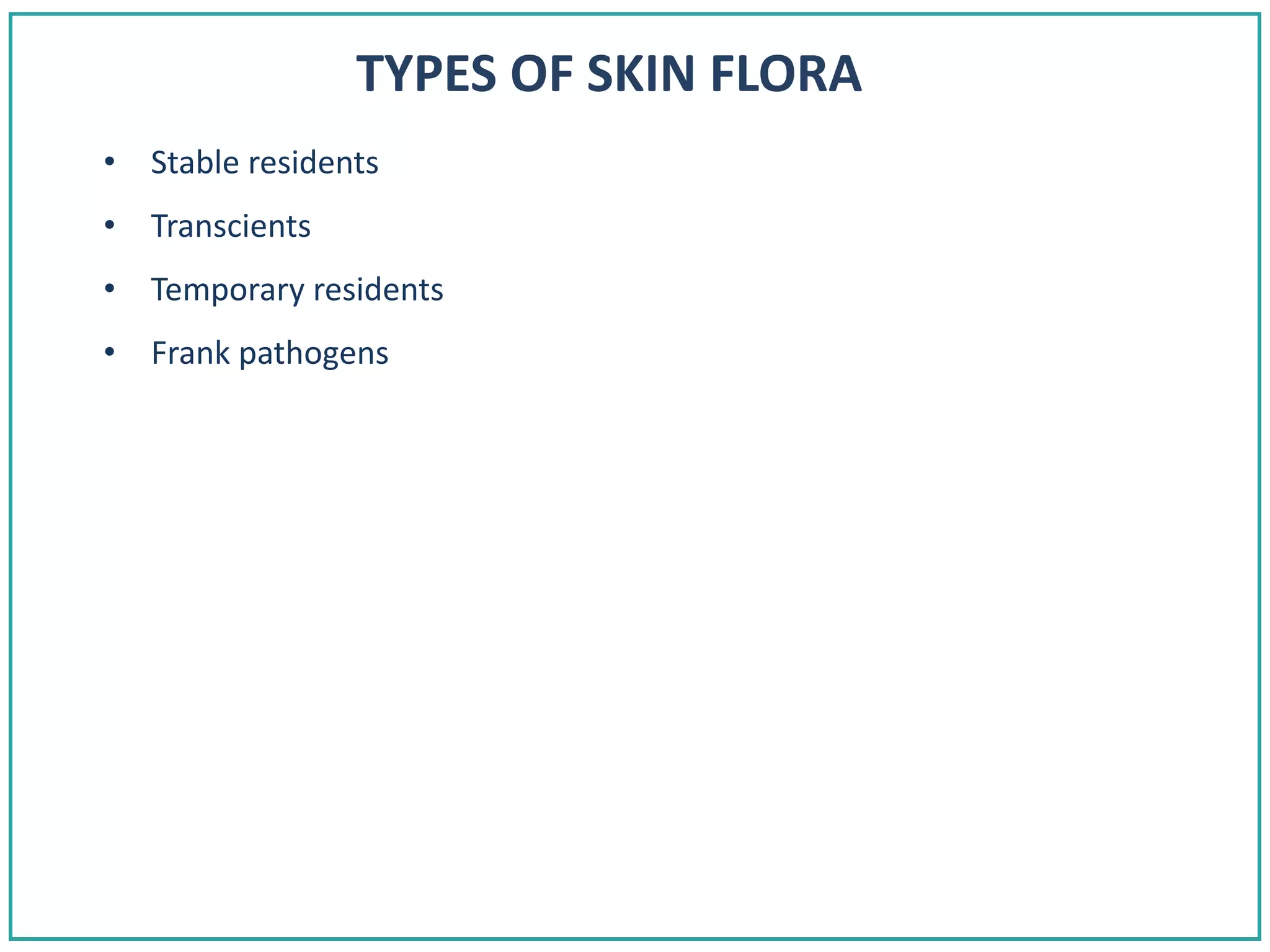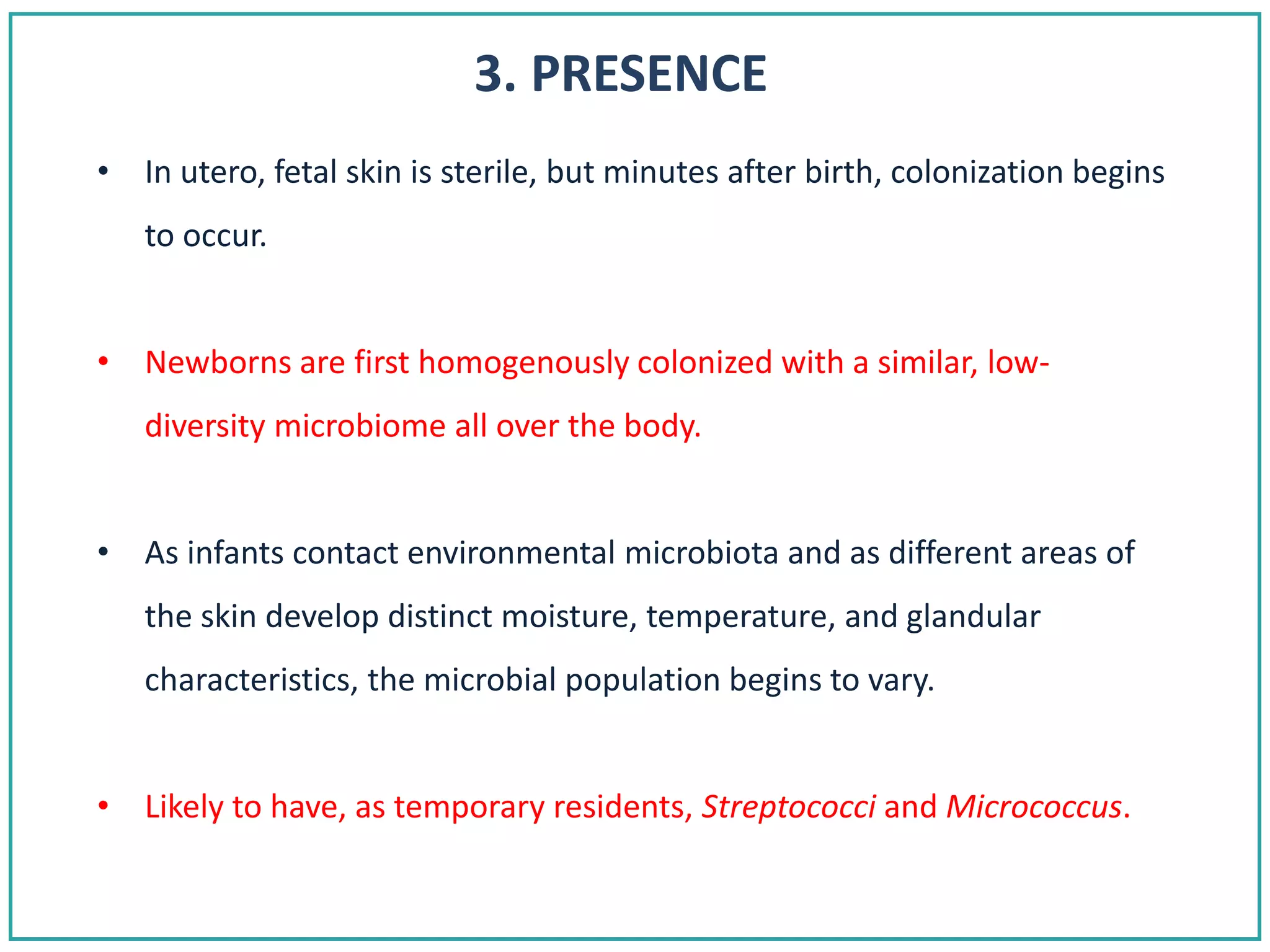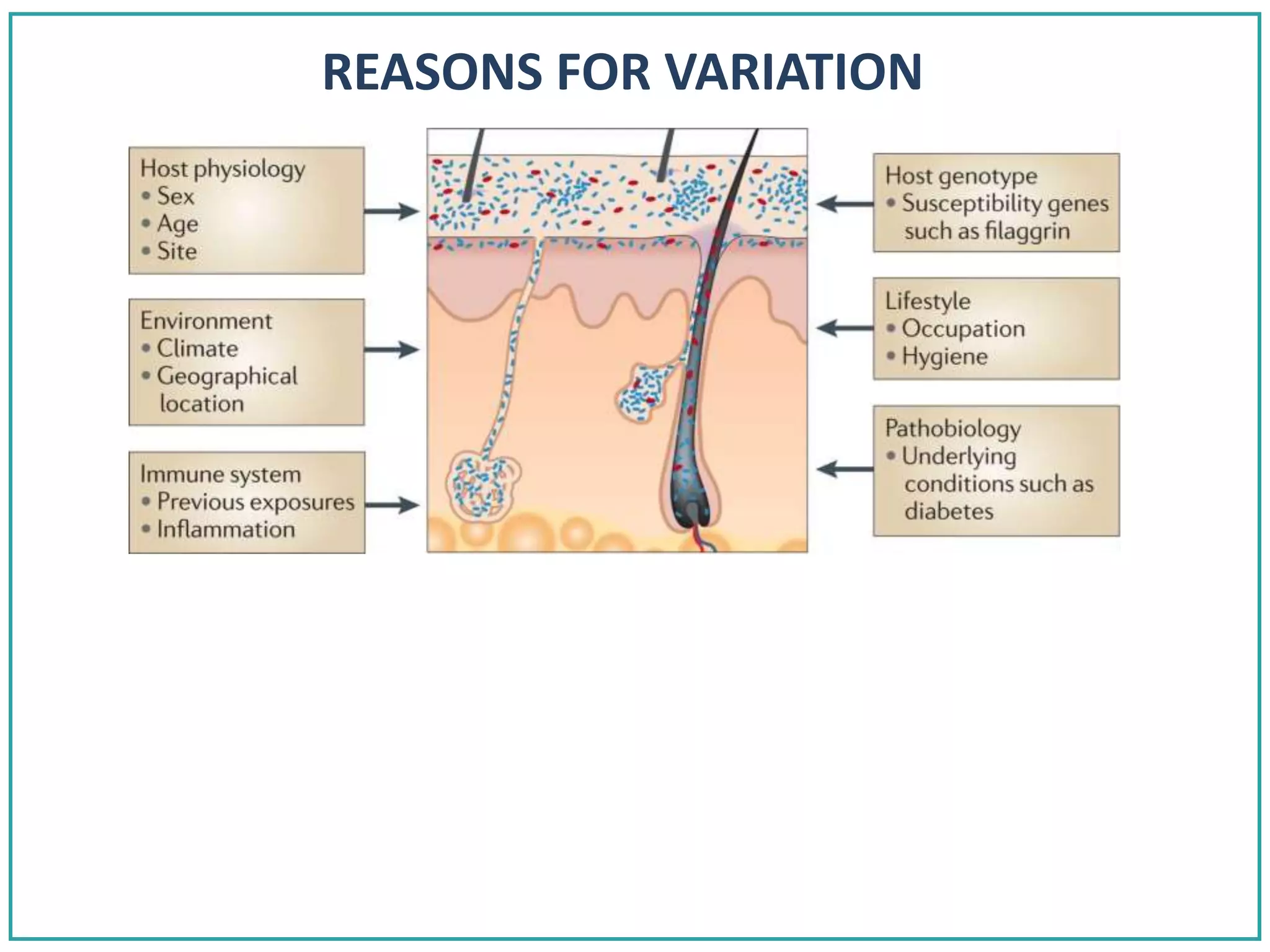The human skin microbiome is diverse and plays important roles in human health. Different regions of the skin harbor distinct bacterial communities that are influenced by environmental and host factors. While some bacteria can cause infection, many resident skin bacteria participate in mutually beneficial relationships or protect the host from pathogens. Maintaining a balanced skin microbiome is important for both immune function and preventing infectious diseases.

















































